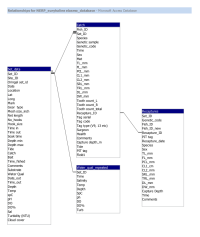EARTH SCIENCE | BIOSPHERE | ECOLOGICAL DYNAMICS | SPECIES/POPULATION INTERACTIONS | SURVIVAL RATES
Type of resources
Topics
Keywords
Contact for the resource
Provided by
Years
-
White sharks are listed as vulnerable under the Commonwealth Environment Protection and Biodiversity Conservation Act 1999 and actions to assist their recovery and long-term viability are prescribed in a national recovery plan for the species. A priority action is to develop an effective means of estimating the size of white shark populations and monitor their status (population trend). This would provide a scientific basis for assessing recovery actions, and for local policies governing human-shark interactions: an issue of significant public concern. NESP Project A3 provides a national assessment of the southern-western adult white shark population abundance and an update of the total eastern Australasian white shark population abundance and status in order to establish the efficacy of existing recovery actions and provide a scientifically sound and rational basis from which to inform policies that aim to balance conservation objectives and public safety. This record describes the individual DNA sequencing of over 500 animals for CK-MR analyses of SA/WA population tissue samples.
-
This database contains acoustic telemetry data for euryhaline elasmobranchs in northern Australian rivers. Data was collected under the National Environmental Research Program (NERP) Marine Biodiversity Hub Project 2.4 'Supporting Management of Listed and Rare Species', and the National Environmental Science Program (NESP) Marine Biodiversity Hub Project A1 'Northern Australian Hotspots for the Recovery of Threatened Euryhaline Elasmobranchs'. An acoustic receiver array was deployed in the Adelaide River, and another in the Alligator Rivers (primarily the South Alligator River) to monitor the movements, habitat use and natural mortality of threatened river sharks (Glyphis species) and sawfishes (Pristis species). Receiver deployment data is available through the IMOS Animal Tracking Facility database (visit https://animaltracking.aodn.org.au/receivers/deployment and search for project 'NESP Northern Australian hotspots for the recovery of threatened euryhaline species'). Detection data is currently embargoed until end 2023.
-
White sharks are listed as vulnerable under the Commonwealth Environment Protection and Biodiversity Conservation Act 1999 and actions to assist their recovery and long-term viability are prescribed in a national recovery plan for the species. A priority action is to develop an effective means of estimating the size of white shark populations and monitor their status (population trend). This would provide a scientific basis for assessing recovery actions, and for local policies governing human-shark interactions: an issue of significant public concern. NESP Project A3 provides a national assessment of the southern-western adult white shark population abundance and an update of the total eastern Australasian white shark population abundance and status in order to establish the efficacy of existing recovery actions and provide a scientifically sound and rational basis from which to inform policies that aim to balance conservation objectives and public safety. This record describes white shark distribution and movement through the use of acoustic and electronic tags fitted to approx. 70 animals. Tag detection data are continually uploaded to the IMOS Animal Tracking Facility (ATF) database. This data collection has been granted Protected Species Status and access to the data is currently restricted. Refer to the Point of Contact listed in this record for further information regarding access to data.
-
This database contains molecular data of elasmobranchs in northern Australian rivers, estuaries and coasts undertaken under the National Environmental Research Program (NERP) Marine Biodiversity Hub Project 2.4 'Supporting Management of Listed and Rare Species'. and the National Environmental Science Program (NESP) Marine Biodiversity Hub Project A1 'Northern Australian Hotspots for the Recovery of Threatened Euryhaline Elasmobranchs'. Surveys using gillnets and rod-and-line were undertaken in the Top End region of the Northern Territory and the Kimberley region of Western Australia. Tissue samples were collected from all elasmobranchs for molecular analyses (population genetics and close-kin mark-recapture).
-

This database contains sampling effort, catch records, biological data, and water quality data for sampling and catches of elasmobranchs in northern Australian rivers, estuaries and coasts undertaken under the National Environmental Research Program (NERP) Marine Biodiversity Hub Project 2.4 'Supporting Management of Listed and Rare Species'. and the National Environmental Science Program (NESP) Marine Biodiversity Hub Project A1 'Northern Australian Hotspots for the Recovery of Threatened Euryhaline Elasmobranchs'. Surveys using gillnets and rod-and-line were undertaken in the Top End region of the Northern Territory and the Kimberley region of Western Australia. Selected animals were tagged for movement ecology, habitat use and mortality estimates (acoustic telemetry), and tissue samples were collected from all fish for molecular analyses (population genetics and close-kin mark-recapture).
 IMAS Metadata Catalogue
IMAS Metadata Catalogue